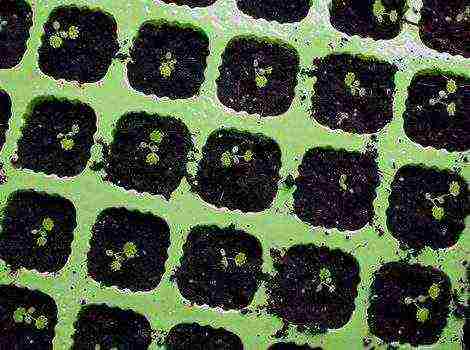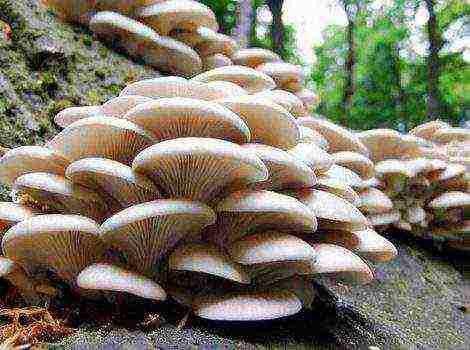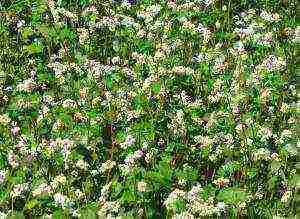Content
Raspberry is a berry known and loved by everyone. Therefore, it is not surprising that it grows in almost every garden area. Today, the assortment of varieties allows you to choose plants, focusing not only on the taste of berries, but also on the growing conditions, because different regions of the country have their own climatic characteristics.
Growing raspberries from seeds
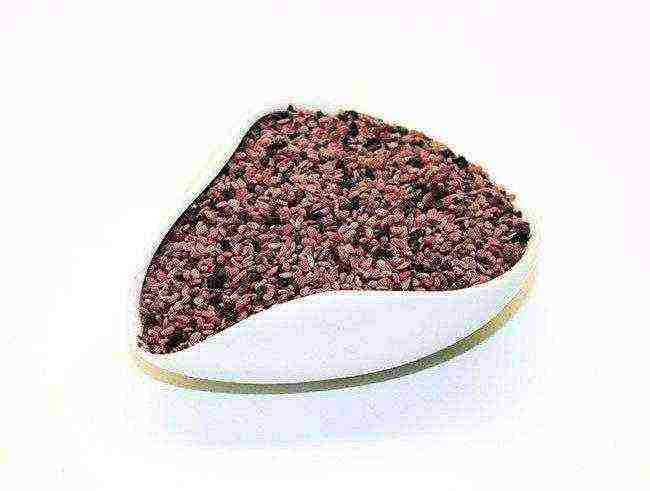
Raspberry seeds are available at gardening stores.
However, the gardener does not always manage to purchase high-quality planting material.... The point is not only the dishonesty of some nurseries, but also the irresponsibility of sellers who neglect the conditions of transportation and storage of seedlings.
In addition, the planting of purchased plants is not always successful. That is why many gardeners prefer to either borrow planting material from neighbors, acquaintances, or grow it on their own from seeds.
Sometimes this method is the only way out of acquiring the variety you like, for example, if the berries were bought in a store, or were treated to them.
Also, raspberry seeds are easy to find in specialty shops for the garden and vegetable garden.
How to collect raspberry seeds
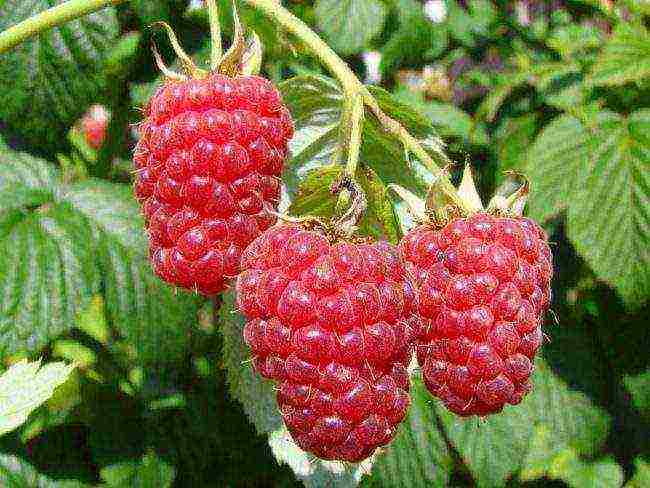
It is better to collect seeds from overripe raspberries.
If the seeds are harvested on their own, then you need to take into account some rules in order to get good plants from them:
- The berries from which the seeds will be obtained must be ripe, and better overripe, which increases the percentage of seed maturity.
- They shouldn't be damaged or wormy.
Preparing for landing
- The berry needs to be crushed by spreading it on a piece of paper, or better on a cotton piece of cloth, it will absorb the juice, and the seeds will be easier to remove.
- Next, you should select good large seeds and rinse them, removing the remnants of the berry pulp from them. In addition, flushing eliminates empty seeds that float up in a container of water.
- Now they need to be laid out on paper or cloth and dried, but not overdried.
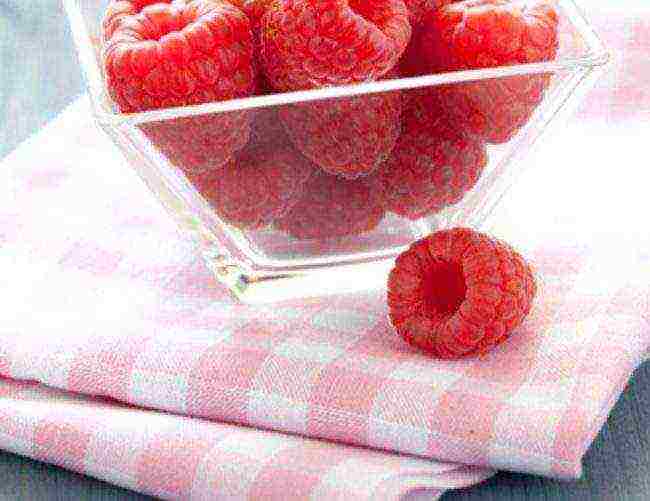
To remove the seeds, the berry must be kneaded on a piece of cloth.
Next, you need to decide when the seeds will be sown. If they are sown in the spring of next year, then it is necessary to ensure their safety. For this, the seeds are placed in a cloth bag and placed in the refrigerator. It is important to keep it moist at all times.
Raspberry seedlings in spring
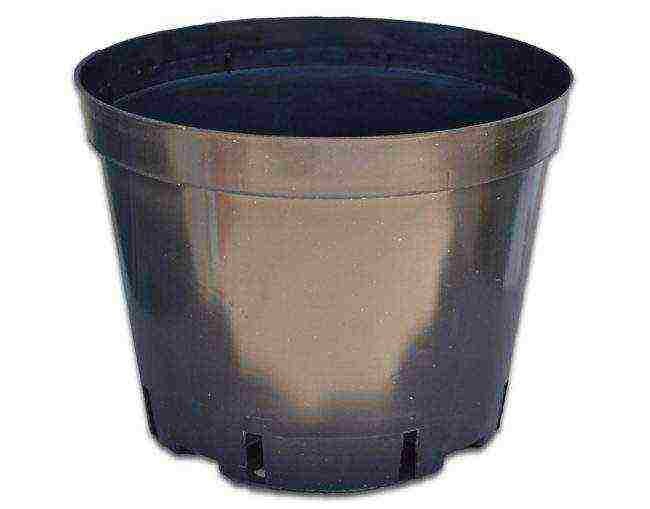
For raspberries, you should choose a pot that is not too deep.
Already in early spring, and better at the end of February, you need to start preparations for sowing raspberry seedlings. This requires:
- Prepare container... It shouldn't be too deep. The optimum depth is about 15 cm. Individual pots can also be used. This is appropriate when sowing germinated seeds;
- Make a mixture of soil and peat in equal proportions - for seeds without prior germination, or germinate them by placing them in water, with a damp cloth. Germination has the advantage that it allows you to immediately select suitable seeds, getting rid of bad ones;
- Already germinated seeds are placed in a container with the mixture sand, soil and peat 1: 1: 1 and deepen them no more than half a centimeter;
- The container is placed in a bright place and the soil moisture is constantly monitored... Typically, watering is required every 3-5 days. It is important to avoid direct sunlight, which can not only dry out the soil, but also destroy young plants;
- Every week and a half, it is advisable to do top dressing. weak urea solution;
- When the sprouts have two leaves, they can be planted in the garden.
If the seeds were sown in the container densely, then you can make a dive before planting them in the raspberry patch, especially if frosts are predicted in the spring.
Planting seedlings from seeds to a permanent place
In order for young plants to take root, you need to choose a good sunny place for them on the site, without drafts. The soil is suitable for neutral, fertile, as raspberries are very fond of nutrients.
Planting seedlings is as follows:
- moisten the container or pots with seedlings well so that when transplanting the earthen lump is as large as possible, then more roots will remain, and the plant will root better, spending less effort on it.
- the required number of holes is dug, it is advisable to add fertilizers there, but you can simply pour half a glass of ash into each hole and about the same amount of humus.
- the seedlings are carefully removed from the container and placed in the pits.
- now they should be sprinkled with earth a little, tamped and watered.
- then cover with earth completely, tamp it again and water again.
- if the spring is cold with frequent frosts, then you can additionally cover the ground around the stems with straw, and build a greenhouse over the plants.
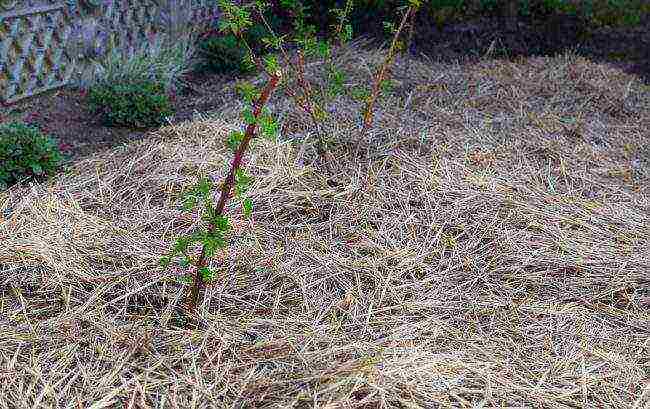
In cold spring, it is better to cover the ground near raspberries with straw.
When the plants take root, you need to regularly feed and water them, weed out the weeds. In many ways, straw mulch will help to facilitate maintenance - under it moisture stays longer, and grass grows less.
Tapestry
It is also worth making trellises, and when the shoots are more than a meter in height, you can pin them to stimulate the branching and growth of additional branches.
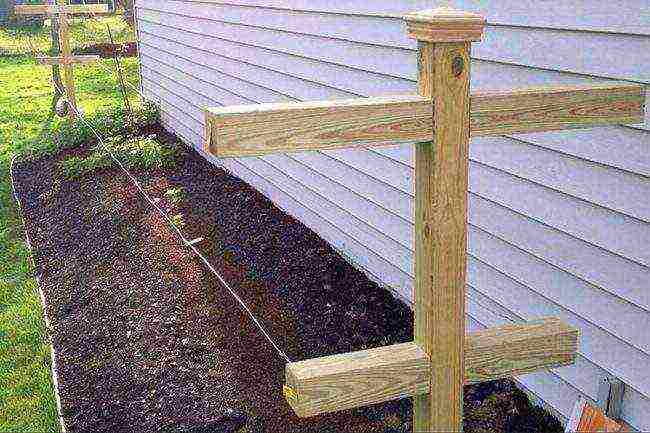
When the raspberry shoots are stretched out, they should be tied to the trellis.
By autumn, watering is reduced and young seedlings are fed with nitrogen fertilizers. At this time, it is advisable to remove the old mulch, if any, and cover the bushes with fresh straw. It is especially important to do this if the plants have suffered from pests, but young seedlings are rarely affected by them.
The harvest can be expected next year.
Autumn sowing of raspberries
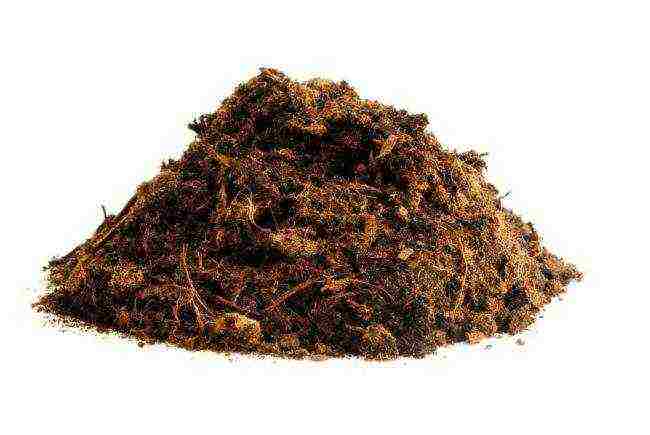
To protect against cold weather, you need humus.
- For autumn sowing, which is considered preferable due to natural stratification, the seeds can be sown immediately into the ground, covering them with a mixture of sand and humus to protect them from freezing.
- Shoots will appear only in spring, therefore, it is important to protect them from frost by covering them with a film.
- Don't forget about fertilizers. - they are necessary for young plants. In the second half of summer, you can also pinch the shoots so that the bush grows denser, and install a support.
Raspberries will bloom only next year.
How best to sow
To grow raspberries from seeds, you need to immediately decide on the sowing method, because both have their advantages and disadvantages.
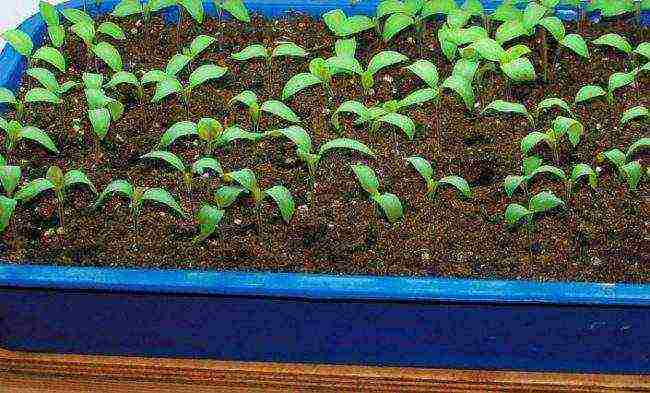
Each seeding method has its own advantages and disadvantages.
Spring sowing (pros)
- it is possible to select good seeds by germination;
- during the growth of seedlings, she is provided with care, feeding, plants develop better;
- by the time of planting, the threat of frost has passed, and even if they are, the seedlings are already quite hardy.
Minuses:
- you need to store the seeds for almost six months, make sure that they do not deteriorate;
- seedlings require space and time to leave;
- you need to choose favorable days for disembarkation;
- when planting, it is important not to damage the roots.
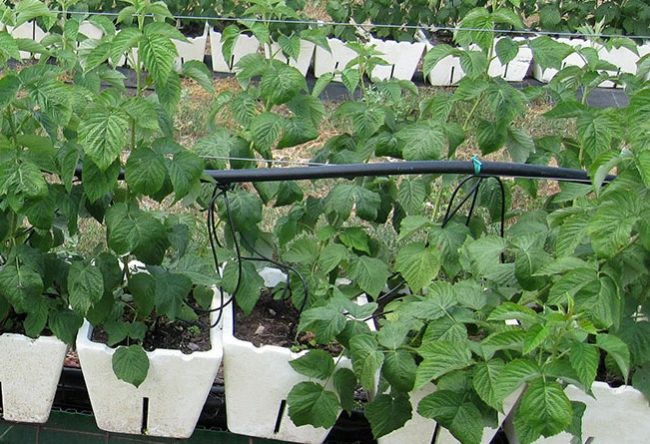
Space is required to store seedlings.
Autumn sowing (pluses)
- no need to worry about preserving seeds;
- you can immediately sow seeds in a permanent place and not injure the seedlings by transplants;
- no problems with seedlings (place, time for leaving);
- natural stratification hardens the plants and discards the weak.
Minuses:
- as a result of stratification, fewer plants can survive than when grown through seedlings;
- the threat of spring frosts;
- seeds in the soil can kill pests.
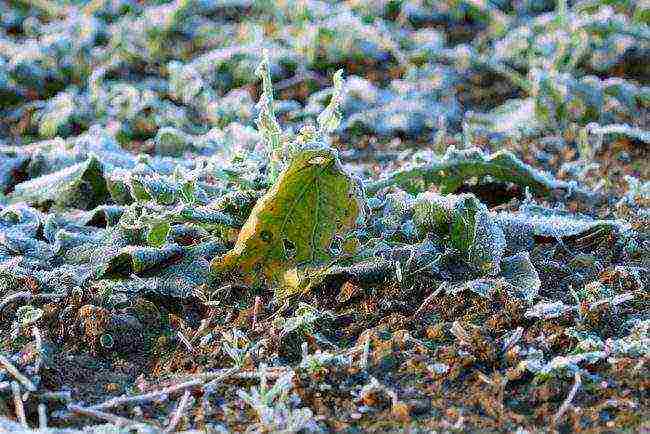
Spring frosts can negatively affect seed growth.
Therefore, when choosing a method of growing seeds, it is worth focusing on the climatic features of the area, the availability of free time and space for seedlings.
Video about the propagation of raspberries using seeds
Let's consider such questions - how to grow raspberries, planting raspberry bushes and proper care for it, and also consider the issue of growing raspberries from seeds, read to the end and then you will definitely get a good harvest in the summer.
Juicy, ripe and fragrant raspberries are appreciated for their excellent taste and useful properties, so many gardeners are interested in the question of how to plant and grow this garden crop, what kind of raspberry care is required at home on the site.
Raspberries are used in cooking for the preparation of jams, preserves, compotes, jellies, various desserts, they are consumed fresh. In addition, the berries have anti-inflammatory and antipyretic effects. In folk medicine, raspberry twigs and leaves are also used to prepare medicinal infusions and decoctions.
How to get a good harvest of raspberries, planting rules.
In order to get full value, quality and abundant harvest of raspberries, you need not only to choose the right planting material, but also to comply with all the necessary agrotechnical requirements. Young seedlings should have well-developed root system, several healthy shoots medium thickness. All raspberry varieties are classified according to ripening time for early, medium-ripening and late varieties.
It is possible to plant raspberry seedlings throughout the year, with the exception of the winter period, but more active growth and development of seedlings is noted in the spring, therefore this period is considered the most suitable for planting. You can plant raspberries after the soil has warmed up enough and the danger of sudden temperature changes has passed. However, do not delay planting raspberries too much, so as soon as the weather is stable, you can plant the seedlings in open ground. Raspberry bushes need to be planted in the ground until the buds form and swell.
At the beginning or in the middle of summer, you can grow seedlings that were previously grown in greenhouses or containers. Such seedlings quickly take root, develop and do not need shelter for the winter. In the fall, seedlings are planted that are well matured and formed. It is worth noting that it is the autumn planting of the culture that is considered more optimal. In any case, in order to determine the optimal time for planting raspberries, you need to take into account its species and varietal characteristics.
Useful properties of raspberries ⇒
The best varieties of raspberries for planting.
The best varieties of raspberries include: Cranes, Indian summer, Hussar, Mirage, Lazarevskaya, Sun, Mikker, Balsam, Bulgarian ruby, Maling, Maling exploid... When choosing a raspberry variety for planting, it is imperative to take into account the climatic and weather characteristics of the region.
Reproduction and cultivation.
Raspberries are propagated using root suckers, by dividing a bush, by seeds, side shoots. Grown in a belt or bush method. Common raspberry varieties, as a rule, form young shoots in the first year, and fruit buds form in the leaf axils. During the second year, there is an active formation of new shoots and the development of fruitful branches.
After winter, the shoots are rationed, leaving the most developed, healthy and strong branches. The yield of the shoot depends on its thickness.Most of the raspberry varieties bring a good harvest in the first half of summer, remontant varieties allow you to get a good harvest throughout the entire period.
After winter, be sure to remove weak, rotten, dry or damaged shoots. Before planting, the seedlings are shortened by 25-30 cm.
How to start planting raspberries?
Where to start planting and how to grow a good harvest of raspberries in your area? Let's understand the secrets of proper cultivation. The optimal place for growing raspberries is considered open, well-lit, sunny areas of the garden... The soil should be nutritious, fertile, well-drained and sufficiently moist, with a neutral reaction.
A good harvest can be obtained by planting raspberries on chernozems, loams or sandy-clay soils. Highly moist, marshy and clayey soils are not suitable for growing seedlings.
In case of insufficient lighting, the seedlings weaken, the yield is significantly reduced and the taste of the berries deteriorates. It is best to plant raspberries on northern, northeastern and northwest slopes... You can plant raspberries along hedges or in a separate area of the garden.
Since most raspberry varieties are self-fertile, it is not necessary to select pollinating varieties. It is best to plant several different varieties of raspberries in the same area at the same time. Which in turn contributes to better pollination. A few months before the planned planting, experienced gardeners recommend preparing and improving the quality of the soil on the site. The soil is well dug, remove weeds, add the required amount nutritional mixtures... You can use complex, mineral or organic fertilizers.
Correct planting of raspberries.
Immediately before planting, planting holes are dug, the depth and diameter of which depends on the variety and size of the root system, but the size of the planting holes should be not less than 35 * 35 * 35... A layer of drainage is laid out at the bottom of the planting pits, a small amount of sand, drainage, high-moor peat and compost are introduced. The roots of the seedlings are evenly sprinkled with a layer of soil, well ram and watered.
The distance between seedlings should be at least 70-90 cm, and between the rows - 1.5-2 m, so a strong thickening of the plantings reduces the yield of the crop. For seedlings that are ready for planting, be sure to remove the shoots with pruning shears, while leaving the strongest, thickest and healthiest, length up to 25 cm... In addition, raspberry bushes need in support... After planting the bushes, the soil is mulched with sawdust, fallen leaves, straw, compost or a small amount of peat mixed with sand.
Raspberry seedlings care.
Proper care of seedlings comes down to regular watering, it should be borne in mind that both a lack of moisture and a strong waterlogging of the soil are destructive for raspberries, loosening the soil between seedlings, removing weeds, pruning, making fertilizers... In one place without transplanting and with proper care, raspberries can grow and bear fruit for up to 20 years. The maximum yield is observed during 7-10 years old... Productivity and yield depends on the variety, climatic conditions and proper care.
Before the onset of the winter period, winter-hardy varieties are tied together, less frost-resistant varieties are bent to the ground. Young seedlings are tied to pegs and covered with any covering material that you find at hand, the main thing is not to break the seedlings.
How to grow raspberries from seeds?
As for growing raspberries from seeds, you will need to know a few secrets that are easier to break down into points.
- We need good seed, for this we collect good overripe berries from the tree, they will be ideal material for further actions.
- We remove the juice from the berries, it is best to put the berries on a fine mesh (gauze) and squeeze.
- You will get a viscous porridge that will need to be mixed with water. After mixing with water, the seeds will float up, we get rid of them, after several water procedures (we mix the berry solution and catch the bad seeds that floated up), you will have only good seeds for growing raspberries.
- Dry the remaining seeds in a dry room with good ventilation.
What is required to plant raspberry seeds?
- It is best to plant raspberry seeds in spring (late April) or early autumn (early September).
- If you decide to arrange planting raspberry seeds in autumn, then we sow in open ground, sink each seed 2 centimeters deep into the maximum. Cover the top with a composition of humus and sand, but strongly. We water and leave to winter, humus will serve as a material for insulation for the winter and fertilizer with all nourishing substances.
- If you decide plant raspberry seeds in spring, then we do it from seedlings. For seedlings we need time (we start planting seeds at home back in March), the soil (composition of soil and peat in a ratio of 50 to 50). We sow seeds on depth 5 mm., then watering... Next, you need to care for raspberry seeds, that is, water with plain water once every three days and fertilize with urea once every 10 days... Then, around the end of April, we go to the point of planting seedlings on the site, which was described above.
Well, now you know how to properly grow raspberries with seedlings and plant seeds, how to care for raspberries and planting rules that will help you grow a good harvest, be sure to share the article with your friends on social networks and subscribe to fresh materials about gardening.
Everyone knows sweet and tasty raspberries, and there are legends about its healing properties. When we think about growing raspberries, we immediately imagine a garden or any plot of land in the open air. Although if you do not have a vegetable garden, but you want to eat berries of your own production, then it is quite possible to grow them on your balcony from seeds or seedlings.
What conditions are necessary for growing raspberries at home?
Lighting and temperature control
In the summer season, the bush requires sufficient lighting, it also needs sufficient fresh air. Therefore, in order to grow a bush at home, an open balcony is well suited. However, if the direct hot rays of the sun fall on the raspberry in the summer during the day, then it is better to shade the plant. Do not overheat it, it does not like it. In the autumn period, you should take the pot to the apartment and install it in a well-lit place.
to the content ↑ Planting capacity and soil for raspberries
For this purpose, a plastic bucket or container with holes that allow excess water to drain out is suitable. The volume of the selected pot should be at least 7-8 liters.
Raspberry loves soil, where potassium and nitrogen are abundant, so feeding is so important. Before planting the plant in the spring season, take a seedling container and fill it with suitable soil. To do this, take garden soil, peat and sand in a ratio of 1: 1: 1.
to the content ↑ Fertilization and watering
Starting from the second year, they begin to fertilize raspberries. From June to mid-July, you need to feed the plant with nitrogen-containing fertilizers, and from the second part of July to August - with complex fertilizers. When you apply top dressing, be sure to loosen the soil.
To make the future harvest on the balcony please you, feed the plant with organic and mineral fertilizers from autumn. Wood ash can be used.
Raspberries love abundant watering, but don't overdo it! If you fill the roots, they will sour and rot. With the onset of spring and in summer, a raspberry bush needs rich watering.
back to contents ↑ How to grow a bush from seeds on a balcony?
Most people think that propagating raspberries with seeds is troublesome, and there may not be a harvest.However, if you correctly prepare the seeds for planting in the soil, then in a year you will be able to see juicy berries on your balcony.
Start by harvesting the seeds, although you can simply purchase them from a specialty store. You should take those from the seeds that are on fully ripe berries. Unripe fruits are not suitable for this. If the berries are overripe, then this is even better for collecting seeds.
Squeeze the collected raspberries through cheesecloth to drain the juice. Spread what remains on a piece of paper or cloth and dry. For drying seeds, a ventilated room is suitable, where there is no direct sunlight. Do not overdry the seeds, they should retain the percentage of moisture!
Dried seeds must be sown in sandy peat soil. It is better to darken the pot, water the soil abundantly so that it is moderately moist. Young plants emerge from seeds reluctantly, they germinate unevenly. Some shoots form in the spring, while others will take a couple of years to sprout. When several leaves are formed on the shoot, then pick the plant (transplant into a larger container). However, if the thickets are scarce, then this procedure can be dispensed with. When sowing in spring, the seeds must be kept in a damp bag, which must be put in the refrigerator at a temperature of 0 g. up to +5 gr.
If you want to sow seeds on the balcony in the fall, then move them into the soil 1-2 centimeters, covering them with sand and humus.
back to contents ↑ Plant pruning
This procedure is important for the plant. Fruiting shoots in the spring are usually shortened by about 20 centimeters. From the 2nd year, the shoots are pruned annually. When winter ends, the shoot should be trimmed at the base by about 10 centimeters, leaving the strongest bud.
Plants that have grown from seeds, like those that have grown from seedlings, begin to bear fruit in the second year of life.
to content ↑ From seedling to first harvest
Growing raspberries at home can turn into a real hobby for you. In order for this process to turn into an exciting action for you, you need to adhere to certain rules, then the plant on the balcony will not differ in any way from its relatives from the garden:
1. Prepare an appropriate soil and a suitable pot that will allow a good drainage of excess liquid.
2. Soak the seedlings in room temperature water for several hours.
3. Place the rootstock of the seedling in the dug hole and cover with fertilized soil. At the same time, do everything as carefully as possible so as not to damage the root system of a young plant. Instead of fertilizers, wood ash works well. Compact the soil.
4. Water the planted bushes well, moisture should remain on the surface.
5. Those buds that will appear must be removed for the plant to form strong wood. Leave 3-5 strong shoots on each bush, get rid of the rest.
6. In summer, protect the plants on the balcony from direct sunlight so as not to overheat. Water and feed the raspberries generously.
7. In the fall, you should reduce watering and stop fertilizing the bush with nitrogen fertilization. We need to prepare it for winter.
8. At the first frost, insulate the root system, as it is most sensitive to cold weather. But the shoots themselves need a cold mode below +5 for the formation of buds. To do this, you need to keep them in the cold for 800-900 hours. For cooling, you can use the refrigerator.
9. After the cooling period has passed, the plant is placed in a room with a temperature regime of +10 to +18. Weak shoots should be cut off, leaving 3-5 strongest ones. Watering and feeding with nitrogen fertilizers is carried out.
10. The first young shoots must be removed, on the second wave several shoots are left, others get rid of.
back to content ↑ Repaired raspberry and its varieties
The harvest of common raspberries is formed within two years, but today breeders have developed a more convenient technology that allows them to grow berries in one year. Repaired raspberry varieties bear fruit on annual shoots in August-September. In general, remontability is the ability of a plant to continuously produce fruits. But the remontant raspberry bears fruit both on annual shoots and on two-year-old stems. But usually two harvests in one season do not work, because this greatly weakens the bush.
Therefore, most often remontant varieties bear fruit on annual shoots in late summer or early spring. In June, the shoots themselves appear, in July - fruit twigs and flowers, in August - beautiful berries.
Abroad, experts have created a variety of remontant varieties, but the requirements of these plants do not correspond to the climate of the middle zone of our country. Therefore, these types of raspberries are not suitable for domestic gardeners, since the fruits ripen only 20-30% before the first cold weather.
There are many different varieties that have taken root very well in our weather conditions and give excellent results. This is the merit of domestic breeders.
If you want to get a harvest right on your balcony, then take just such remontant varieties of raspberries.
They all differ in the size of the berries and their color, shape, flavor. There are orange and golden fruits. Choose at your own discretion.
Varieties of remontant raspberries:
- apricot;
- the August miracle;
- Indian summer-2;
- Bryansk miracle;
- diamond;
- hercules;
- Eurasia;
- dawn is evening;
- Golden domes;
- reliable;
- ruby necklace;
- orange miracle.
To grow tasty and healthy berries on your balcony, you need the information described above and desire. Do not be lazy and take care of your raspberry bushes, then a pleasant reward in the form of beautiful fruits awaits you!
Similar articles:
Raspberries are a healthy berry and one of the most popular horticultural crops that can be found in almost every summer cottage. However, there are times when you need to get a new bush, and only seeds are available planting material. We will talk about the features of growing raspberries from seeds in this article.
How to choose raspberry seeds?
Here it is worth starting from which variety you need. Most gardeners prefer the large berry option. An additional plus is the ability to shoot several crops per season.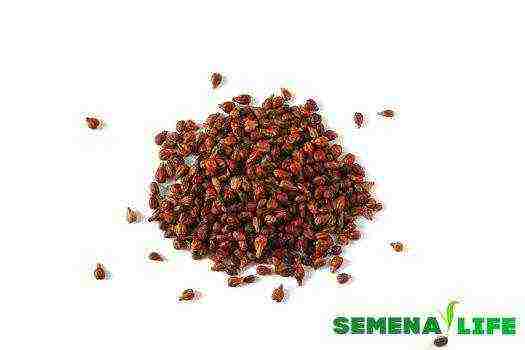
The most popular raspberry varieties today are:
- "Beauty of Russia";
- "Hussar";
- "Hercules";
- "Bryansk miracle" (especially well suited for regions with a harsh climate);
- "Polka"
other.
If you want something exotic, pay attention to options with light berries. They are no less large and healthy, but they have a special aroma and good dessert qualities.... Their main feature is complete harmlessness for allergy sufferers, which means that such a delicacy can be given to both a small child and a nursing mother. The most popular types of such raspberries are Runaway, Yellow Giant, Amber and others.
 Colored raspberry seeds can be found on Aliexpress!
Colored raspberry seeds can be found on Aliexpress!
Forest raspberry seeds are more difficult to find, but many are interested in this particular species because of its medicinal properties. If you want to grow this type in your garden, try to collect the planting material yourself from the berries.
Growing technology
So, the seeds are ready, now you need to plant them. You should be extremely careful here. Usually raspberries are spread by cuttings, in which case they almost always take root without any problems. With seeds, the process will be somewhat more complicated, although even a novice gardener can cope with it, you just need to follow some points.
At first, the planting time is fundamentally important: it must be done before spring or winter, otherwise by the beginning of the summer cottage you will not wait for the shoots. It is better to do this in pots at home.Seeds can be placed in open ground in late autumn, but in this case they need to be additionally insulated (for example, with a layer of humus) to avoid freezing.
Secondly, you need to prepare the ground in advance. The ideal option is a mixture of ordinary soil with peat in a 50:50 ratio. Seeds can be placed there without any prior germination. They should not be especially deepened, it is believed that it is enough just to scatter the bones over the surface and lightly sprinkle them with soil.
Thirdly, never forget about watering! Seedlings need water every day (if the room is hot, you can do this even twice a day).
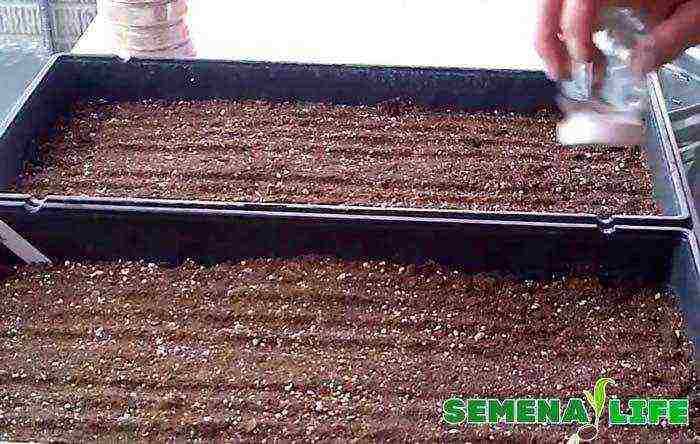 Planting frequently, seeds close together
Planting frequently, seeds close together
If these conditions are met, after a while you will wait for the first shoots. As soon as the young twigs have a normal root system and a second true leaf appears, they can be transplanted directly to the garden plot. Place new plants at a distance of 5-10 centimeters from each other. After that, all that remains is to water and loosen the ground, as well as remove weeds and wait for the first fruits to appear.
Expert opinion
Most agronomists agree that planting raspberries with seeds is worthwhile, albeit requiring some experience and patience. The main advantage of this method is that with its help you can get completely new varieties of berries, which, in the literal sense, have not been seen before. Often, with this type of germination, hybrids appear (for example, with garden blackberries), which have an unusual taste and appearance.
The famous TV presenter and expert, Oktyabrina Ganichkina, emphasizes that there is not much difference between the bushes grown from the cuttings and from the seed. If both of them are fed, cut and weeded in time, the plants will delight the owner with high yields.
Experienced summer residents also know that forest (aka medicinal) raspberries take root better in the form of seeds. And even if the fruits of such a bush are not particularly large, their beneficial properties fully compensate for this disadvantage.
Useful Tips
Based on the opinion of professionals and experienced gardeners, you can give those who want to plant raspberries in a non-standard way the following recommendations:
- Remember that the seeds of this culture do not germinate well (at best, about 50% of the original amount remains), so buy them immediately with a reserve;
- If you want to try yourself as an agronomist, try to get the seeds yourself. To do this, you need large overripe berries, which must be grinded, and then thoroughly rinsed the resulting mass, and then dry the resulting material;
- Please note that in the first year, the bushes are not fed. All fertilizers for this plant begin to be used only from the second year. However, seedlings sprouted from seeds will not be damaged by additional nutrition. It is best to use urea for this purpose. The minimum number of dressings during the summer should be five times.
So, you can grow fruiting raspberries not only from cuttings. Be patient, and you will acquire new original varieties obtained from seeds that will decorate your summer cottage and become the basis for delicious jam.

